How to Grow Juicy, Tasty Strawberries
Growing strawberries is not just a hobby; it's a delightful journey that rewards you with sweet, juicy fruits that can brighten up any dish or snack. Imagine stepping into your garden, plucking a ripe strawberry, and savoring its burst of flavor right off the vine! But how do you ensure that your strawberries are not just good, but extraordinary? In this article, we'll explore essential tips and techniques for successfully growing strawberries, from selecting the right variety to harvesting the fruit, ensuring a bountiful and delicious crop.
When it comes to strawberries, one size does not fit all. Selecting the appropriate strawberry variety is crucial for successful cultivation. Different types offer unique flavors, growth habits, and seasonal yields, making it important to choose one that fits your climate and preferences. For instance, June-bearing strawberries produce a large crop in late spring, while everbearing and day-neutral varieties provide fruit throughout the summer and into fall. Consider your local climate and how much time you want to dedicate to your garden when making your choice.
Soil preparation is key for healthy strawberry plants. Understanding soil pH, texture, and nutrient content helps create an optimal growing environment, ensuring strong root development and fruit production. Strawberries thrive in well-drained, slightly acidic soil, ideally with a pH between 5.5 and 6.5. Testing your soil pH allows you to determine its acidity or alkalinity, which influences nutrient availability. If your soil is too alkaline, you may need to amend it with sulfur or organic matter to lower the pH.
Testing soil pH is like taking your garden's temperature—it tells you what adjustments are needed for optimal growth. You can use a simple soil test kit available at garden centers or send a sample to a local extension service. The results will guide you in making the right amendments for your strawberries to thrive.
Incorporating organic matter, such as compost or well-rotted manure, improves soil structure and fertility. This practice enhances moisture retention and provides essential nutrients for strawberry plants. Think of organic matter as a multi-vitamin for your soil—it boosts its health and helps your plants grow strong and productive.
Selecting a sunny, well-drained location is vital for growing strawberries. A spot with at least six hours of sunlight daily promotes healthy growth and maximizes fruit production. If your garden has areas that remain soggy after rain, it's best to avoid those spots, as strawberries dislike "wet feet." Instead, look for elevated areas or consider building raised beds to improve drainage.
Proper watering is essential for strawberry health. Understanding the right amount and frequency helps prevent issues like root rot while ensuring plants receive adequate moisture for fruit development. Strawberries generally need about an inch of water per week, especially during fruiting. Using a drip irrigation system or soaker hoses can deliver water directly to the roots, minimizing evaporation and fungal diseases.
Managing pests and diseases is crucial for a successful strawberry crop. Identifying common threats and implementing preventive measures can help maintain plant health and fruit quality. Regularly inspecting your plants for signs of distress is a proactive approach. When you spot a pest or disease early, you can often address it before it becomes a significant problem.
Recognizing common strawberry pests, such as aphids and slugs, allows for timely intervention. Early detection and control methods can significantly reduce damage and improve yield. For instance, you can introduce beneficial insects like ladybugs to help control aphid populations naturally.
Fungal diseases can devastate strawberry crops. Implementing good cultural practices, such as crop rotation and proper spacing, helps reduce the risk of infection and promotes healthy plants. Additionally, ensuring good air circulation around your plants can deter fungal growth. Consider using mulch to keep soil moisture levels stable while preventing fungal spores from splashing onto the leaves.
Knowing when and how to harvest strawberries is essential for enjoying their peak flavor. Proper harvesting techniques ensure that strawberries are picked at the right time for maximum sweetness and juiciness. Generally, strawberries are ready to harvest when they are fully red and slightly firm to the touch. Picking them at this stage ensures you get the best flavor and texture.
Understanding the signs of ripeness, such as color and firmness, helps determine the best time to harvest strawberries. A ripe strawberry should be vibrant red, with no green patches remaining. If you pick them too early, they may not develop the sweetness you're hoping for.
Using proper harvesting techniques minimizes damage to the fruit and plants. Gently twisting or cutting the stem ensures that strawberries remain intact and ready for enjoyment. Be sure to harvest in the morning when the fruits are cool, which helps maintain their freshness longer.
Proper storage techniques can extend the shelf life of strawberries while preserving their flavor. Storing fresh strawberries correctly helps maintain their freshness for longer. Using breathable containers and refrigeration can prevent spoilage and keep them delicious. Remember to wash strawberries only right before you eat them, as moisture can lead to mold.
Strawberries can be enjoyed in numerous ways, including desserts, salads, and smoothies. Exploring creative recipes showcases their versatility and adds a burst of flavor to various dishes. Whether you're blending them into a refreshing smoothie, tossing them in a salad, or baking them into a pie, strawberries can elevate any meal.
- What is the best time to plant strawberries? The best time to plant strawberries is in early spring or late fall, depending on your climate.
- How often should I water my strawberry plants? Strawberries need about an inch of water per week, especially during fruiting.
- Can I grow strawberries in containers? Yes! Strawberries can thrive in containers as long as they have adequate drainage and sunlight.
- How do I know when strawberries are ripe? Ripe strawberries are fully red, firm, and have no green patches. They should be picked gently from the plant.
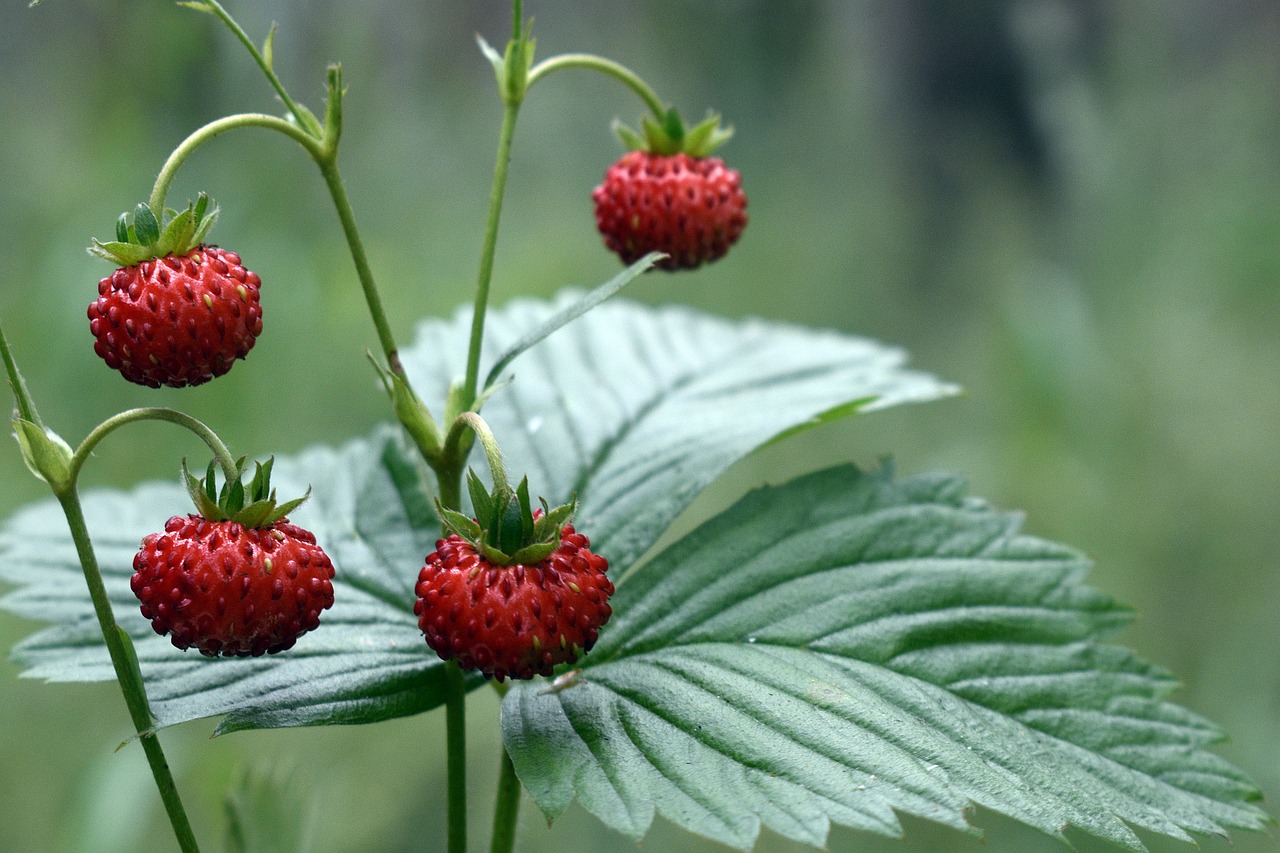
Choosing the Right Strawberry Variety
When it comes to growing strawberries, choosing the right variety is like picking the perfect paint color for your home—it sets the tone for everything that follows! With so many options out there, it can feel overwhelming, but don’t worry! Let's break it down together. First off, different strawberry varieties have unique flavors, growth habits, and seasonal yields. Some are perfect for snacking, while others shine in desserts or jams. So, how do you know which one to go for?
One of the most popular types is the June-bearing strawberry. These beauties produce a big crop all at once, typically in late spring to early summer. If you’re looking to make a lot of jam or enjoy a massive strawberry feast, this variety is for you! On the flip side, we have everbearing strawberries, which offer smaller, continual harvests throughout the growing season. They’re perfect for those who want to enjoy fresh strawberries over a longer period.
Another option is the day-neutral strawberry, which is a bit of a hybrid. These plants can produce fruit regardless of day length, giving you strawberries from spring until fall. They’re fantastic if you want to maximize your harvest! However, keep in mind that different varieties can have different preferences when it comes to climate. For instance, some thrive in cooler regions, while others prefer warmer, sunnier spots.
To help you choose, here’s a quick comparison table:
| Variety | Harvest Time | Flavor Profile | Best Use |
|---|---|---|---|
| June-bearing | Late Spring to Early Summer | Sweet and Juicy | Jams, Desserts |
| Everbearing | Summer to Fall | Moderately Sweet | Fresh Eating, Salads |
| Day-neutral | Spring to Fall | Sweet and Tart | Fresh Eating, Smoothies |
Before making your final decision, consider your local climate and the growing conditions in your garden. If you live in a cooler area, June-bearing strawberries might be your best bet, while warmer climates could favor everbearing or day-neutral varieties. Additionally, think about how you plan to use your strawberries—whether for snacking, baking, or preserving—since that will greatly influence your choice.
In summary, the right strawberry variety can make all the difference in your gardening adventure. By understanding the characteristics of each type, you can select the one that fits your needs and local growing conditions. So, grab your gardening gloves and get ready to enjoy the sweet rewards of your hard work!
- What is the best time to plant strawberries? The best time to plant strawberries is in early spring or late fall, depending on your climate.
- How long does it take for strawberries to bear fruit? Generally, strawberries will start to bear fruit about 4-6 weeks after blooming.
- Can I grow strawberries in containers? Yes! Strawberries can thrive in containers, making them perfect for small spaces.
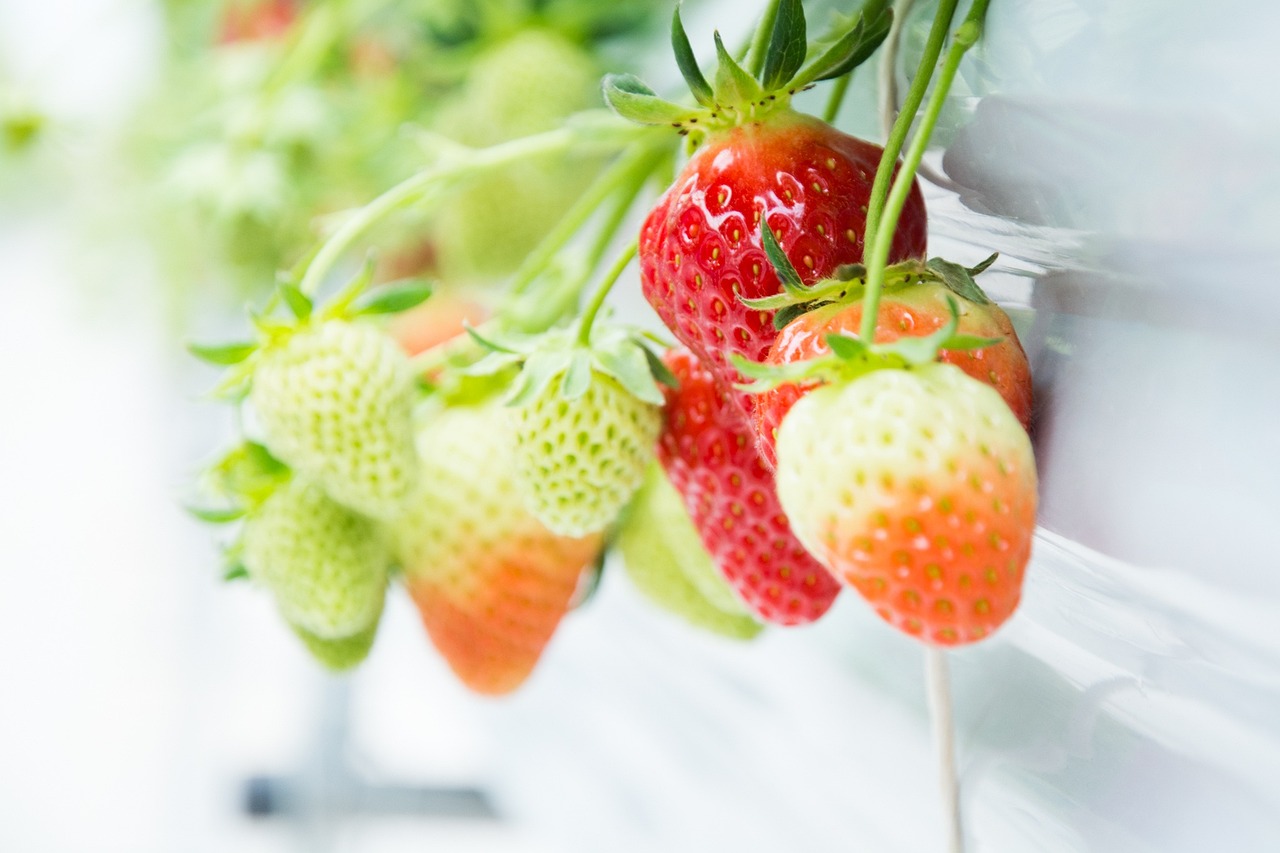
Preparing the Soil
Soil preparation is a fundamental step in ensuring the health and productivity of your strawberry plants. Think of the soil as the foundation of a house; without a solid base, everything else can crumble. Strawberries are particularly sensitive to their growing conditions, and the right soil can make all the difference in the world. To get started, it’s essential to understand the basic components of your soil, including its pH, texture, and nutrient content. This knowledge will help you create an optimal growing environment that fosters strong root development and abundant fruit production.
One of the first steps in preparing your soil is to test its pH. The pH level indicates whether your soil is acidic, neutral, or alkaline, which significantly influences nutrient availability for your strawberry plants. Strawberries thrive in slightly acidic soil, ideally between 5.5 and 6.8 on the pH scale. If your soil is too alkaline, you might need to amend it with sulfur or peat moss to lower the pH. Conversely, if it’s too acidic, adding lime can help raise the pH to a more suitable level. A simple soil test kit can be purchased at garden centers or online, and it’s a small investment that can yield big results.
Incorporating organic matter into your soil is another crucial step in preparing it for strawberries. Organic matter, such as compost or well-rotted manure, enhances soil structure and fertility. It improves moisture retention, which is vital for the shallow root systems of strawberries. Not only does organic matter provide essential nutrients, but it also encourages beneficial microorganisms that promote plant health. Aim to mix in about 2 to 4 inches of organic matter into the top 12 inches of soil. This practice will create a rich, loamy environment that strawberries adore.
Location, location, location! Selecting the right spot for your strawberry patch is vital for their success. Strawberries love the sun, so find a location that receives at least six hours of direct sunlight each day. A sunny spot not only promotes healthy growth but also maximizes fruit production. Additionally, ensure that the area is well-drained, as strawberries are prone to root rot if their roots sit in waterlogged soil. If your chosen location has poor drainage, consider planting strawberries in raised beds or mounds to improve drainage and airflow around the plants.
Once you have prepared the soil and chosen the right location, it’s essential to establish a proper watering routine. Strawberries require consistent moisture, especially during their fruiting stage. However, overwatering can lead to root rot, which can be devastating. A good rule of thumb is to provide about 1 to 1.5 inches of water per week, either through rainfall or irrigation. Drip irrigation systems are particularly effective as they deliver water directly to the soil, minimizing evaporation and reducing the risk of fungal diseases. Remember, the goal is to keep the soil evenly moist but not soggy.
In summary, preparing the soil for strawberry cultivation involves several key steps: testing the soil pH, adding organic matter, choosing the right location, and establishing effective watering techniques. By investing time in these preparations, you’re setting the stage for a bountiful harvest of juicy, delicious strawberries that you can enjoy fresh from your garden. So roll up your sleeves, get your hands dirty, and let’s make those strawberries thrive!
- What is the best time to prepare soil for strawberries? The best time to prepare soil for strawberries is in the fall or early spring, before planting.
- How often should I test my soil pH? It's advisable to test your soil pH every few years or when you notice issues with plant growth.
- Can I grow strawberries in containers? Yes! Strawberries can thrive in containers, provided they have adequate drainage and sunlight.
- What type of organic matter is best for strawberries? Well-rotted manure and compost are excellent choices for enriching the soil for strawberry plants.
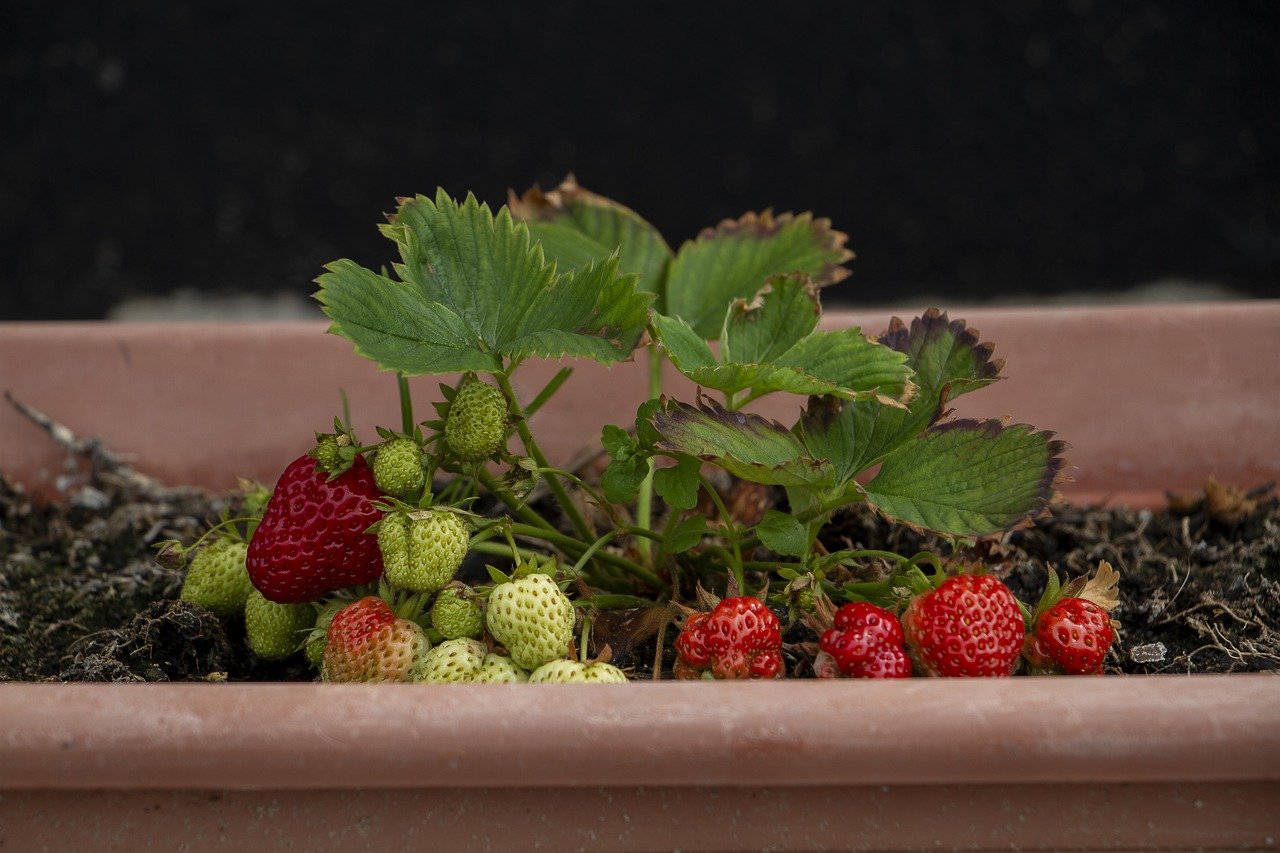
Testing Soil pH
Testing your soil's pH is a crucial step in growing healthy strawberries. Why, you ask? Well, the pH level of your soil directly influences the availability of nutrients that your plants need to thrive. Strawberries prefer a slightly acidic environment, ideally between a pH of 5.5 and 6.5. If your soil falls outside this range, you might face challenges like poor growth or lackluster fruit production. So, how do you go about testing your soil's pH?
First, you can purchase a simple soil pH test kit from your local gardening store or online. These kits usually come with easy-to-follow instructions, making the process straightforward. Alternatively, you can send a soil sample to a local agricultural extension office for a more comprehensive analysis. This option might provide additional insights into nutrient levels and soil texture, which can be incredibly beneficial for your strawberry plants.
Once you've obtained your soil sample, follow these steps:
- Collect samples from various spots in your garden to get a representative mix.
- Mix the samples in a clean bucket and allow them to air dry.
- Follow the instructions on your pH test kit to determine the acidity of your soil.
After testing, you might find that your soil is too acidic or alkaline. But don't worry! Adjusting the pH is possible. If your soil is too acidic, adding lime can help raise the pH. Conversely, if it's too alkaline, incorporating sulfur or organic matter can lower the pH. Regular testing and adjustments can lead to a thriving strawberry patch that yields delicious, juicy fruit.
Q: How often should I test my soil pH?
A: It's best to test your soil pH at least once a year, especially before planting your strawberries. This way, you can make any necessary adjustments to optimize your soil conditions.
Q: Can I test soil pH without a kit?
A: Yes, there are DIY methods using household items like vinegar and baking soda, but these may not be as accurate as a dedicated soil pH test kit.Q: What if my soil pH is perfect?
A: If your soil pH is within the ideal range, congratulations! Just focus on maintaining good soil health through organic matter and proper watering practices.
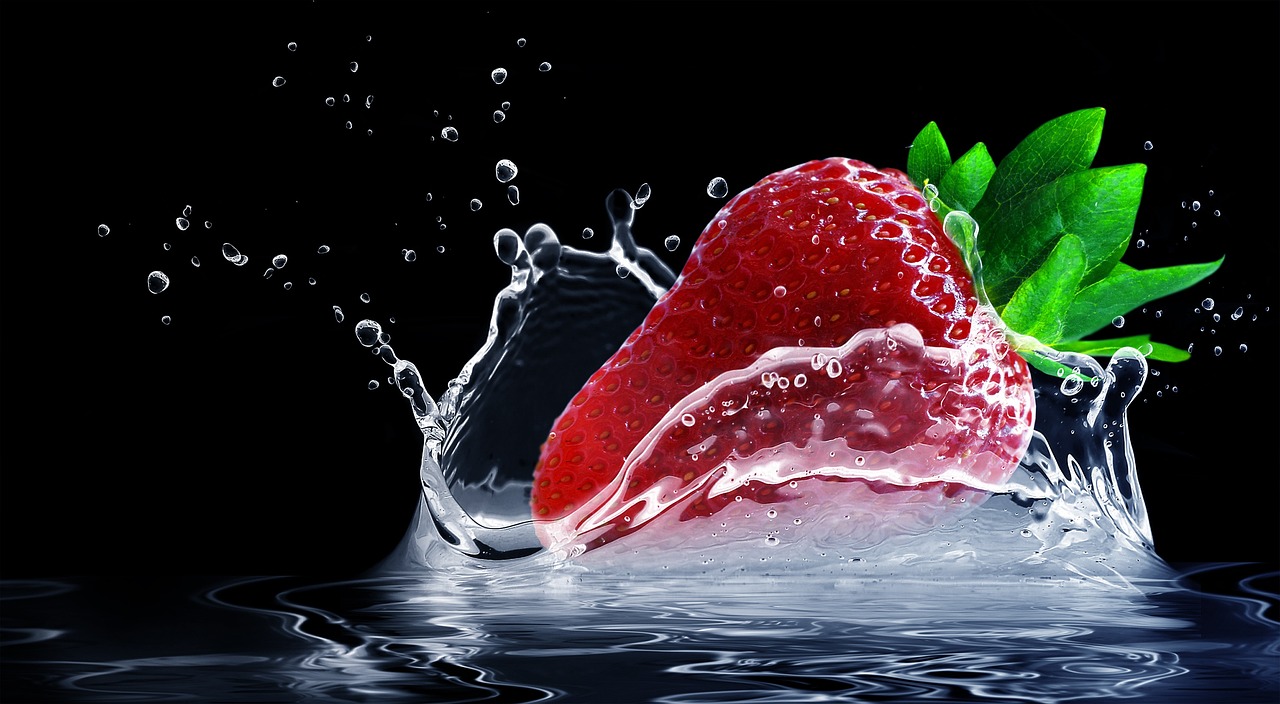
Adding Organic Matter
Incorporating organic matter into your strawberry garden is like giving your plants a warm hug. It not only improves the soil structure but also enhances its fertility, making it a vital step in preparing for a bountiful harvest. Organic matter, such as compost or well-rotted manure, enriches the soil with essential nutrients that strawberry plants crave. Think of it as a nutritious meal for your plants, providing them with the energy they need to grow strong and produce juicy fruits.
When you add organic matter to your soil, you’re essentially creating a healthy ecosystem. This practice improves moisture retention, allowing the soil to hold onto water longer, which is crucial during dry spells. Additionally, organic matter promotes beneficial microbial activity, which helps break down nutrients and make them more available to your plants. As a result, your strawberries will not only thrive but also yield sweeter and more flavorful fruits.
To effectively add organic matter, consider the following steps:
- Start by collecting high-quality organic materials such as compost, aged manure, or leaf mold.
- Spread a layer of organic matter about 2 to 4 inches thick over the soil surface.
- Mix it into the top 6 to 12 inches of soil using a garden fork or tiller, ensuring even distribution.
- Allow the soil to rest for a few weeks before planting to let the nutrients settle in.
By following these steps, you’ll create a rich, fertile environment that supports robust strawberry plants. Remember, the key to successful strawberry cultivation lies in the health of the soil. The more organic matter you incorporate, the more vibrant and productive your strawberry patch will become. So, roll up your sleeves and get ready to dig in – your strawberries will thank you!
Q1: What type of organic matter is best for strawberries?
A1: Well-rotted manure, compost, and leaf mold are excellent choices. They provide essential nutrients and improve soil structure.
Q2: How often should I add organic matter to my strawberry beds?
A2: It's beneficial to add organic matter at the beginning of each growing season and to incorporate it into the soil every few years to maintain soil health.
Q3: Can I use fresh manure as organic matter?
A3: It's best to avoid fresh manure as it can burn plants and may contain pathogens. Always use well-rotted manure instead.
Q4: Will adding organic matter help with pest control?
A4: Yes, healthy soil with plenty of organic matter can promote beneficial insects and microorganisms that help control pests naturally.
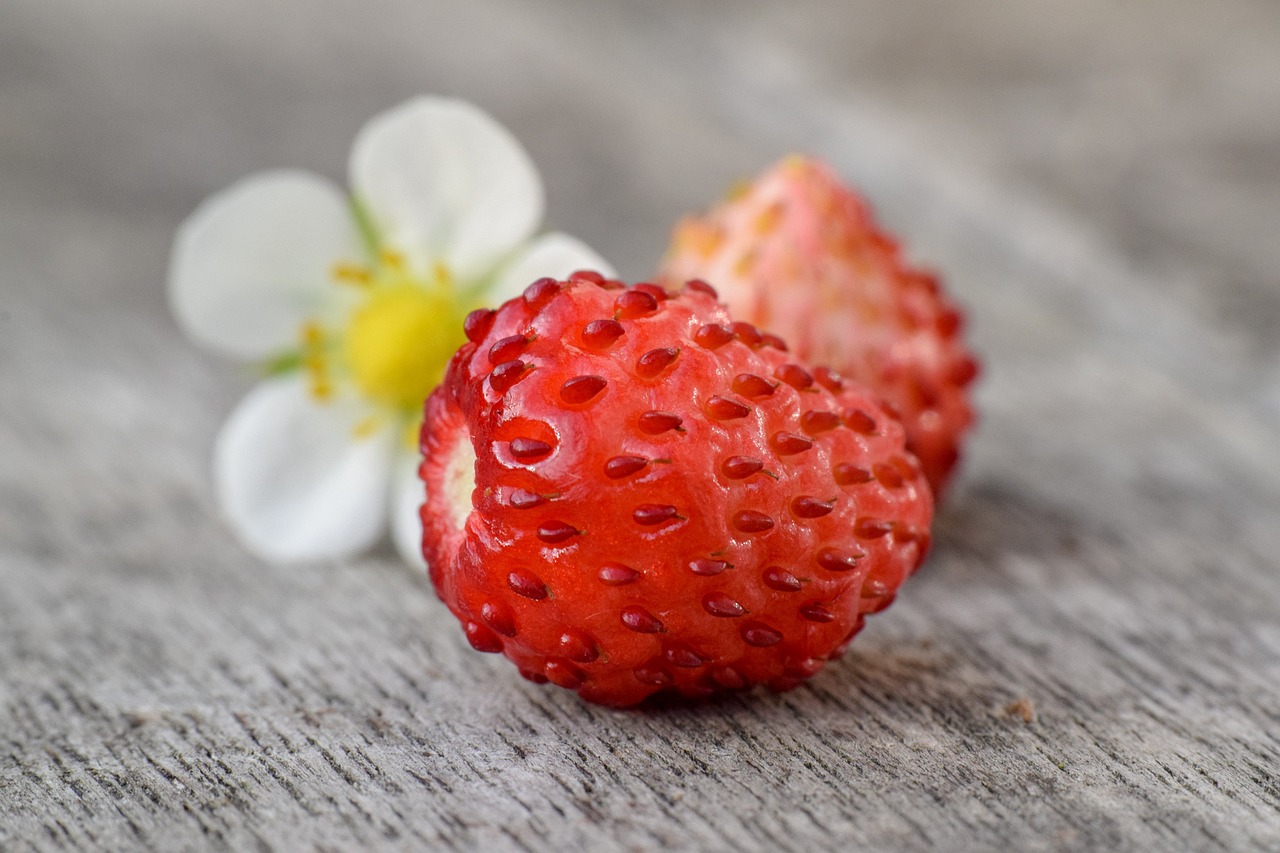
Choosing the Right Location
When it comes to growing strawberries, the location you choose can make all the difference between a mediocre harvest and a bountiful one. Strawberries are sun-loving plants that require at least six hours of direct sunlight each day to thrive. Imagine your strawberry plants basking in the warm sun, soaking up all that energy to produce juicy, sweet berries. If you place them in a shady spot, you're essentially robbing them of their potential. So, where should you plant them?
First and foremost, look for a location that is well-drained. Strawberries are prone to root rot, which can be a real nightmare for any gardener. If water tends to pool in your chosen area after a rain, you might want to rethink your spot. A gentle slope can be ideal, as it allows excess water to run off, keeping the roots healthy and happy. Consider using raised beds if you're dealing with heavy clay or compacted soil.
Additionally, think about the proximity to other plants. Strawberries benefit from being planted near companion plants like spinach or lettuce, which can help deter pests. However, avoid planting them near plants in the nightshade family, such as tomatoes and potatoes, as they can compete for nutrients and attract similar pests. Here’s a quick look at some good and bad neighbors for your strawberries:
| Good Companions | Bad Companions |
|---|---|
| Spinach | Tomatoes |
| Lettuce | Potatoes |
| Onions | Eggplants |
| Garlic | Peppers |
Another crucial factor is air circulation. Good airflow around your plants can help reduce the risk of fungal diseases. If your strawberries are crammed into a tight space, they’ll be more susceptible to issues like powdery mildew. So, give them some room to breathe! A spacing of about 12 to 18 inches between plants is generally recommended to promote healthy growth and prevent overcrowding.
Lastly, consider the climate of your area. Different strawberry varieties have different temperature tolerances, so it’s essential to choose a location that fits the needs of the specific type you’re planting. For example, if you live in a hotter climate, look for varieties that are heat-tolerant. Conversely, if you’re in a cooler area, opt for varieties that can handle the chill. Understanding your local climate will guide you in making the best decision for your strawberry patch.
In summary, choosing the right location for your strawberries involves a careful balance of sunlight, drainage, companion planting, air circulation, and climate considerations. By paying attention to these factors, you’ll set the stage for a fruitful strawberry garden that will delight your taste buds and impress your friends and family.
- How much sunlight do strawberries need? Strawberries require at least six hours of direct sunlight each day for optimal growth.
- Can I grow strawberries in pots? Yes, strawberries can thrive in pots as long as they have enough sunlight and proper drainage.
- What is the best time to plant strawberries? The best time to plant strawberries is in early spring, after the last frost has passed.
- How often should I water my strawberry plants? Water your strawberry plants regularly, aiming for about an inch of water per week, adjusting for rainfall.

Watering and Irrigation Techniques
This article explores essential tips and techniques for successfully growing strawberries, from selecting the right variety to harvesting the fruit, ensuring a bountiful and delicious crop.
Selecting the appropriate strawberry variety is crucial for successful cultivation. Different types offer unique flavors, growth habits, and seasonal yields, making it important to choose one that fits your climate and preferences.
Soil preparation is key for healthy strawberry plants. Understanding soil pH, texture, and nutrient content helps create an optimal growing environment, ensuring strong root development and fruit production.
Testing soil pH allows you to determine its acidity or alkalinity, which influences nutrient availability. Strawberries thrive in slightly acidic soil, so adjustments may be necessary for optimal growth.
Incorporating organic matter, such as compost or well-rotted manure, improves soil structure and fertility. This practice enhances moisture retention and provides essential nutrients for strawberry plants.
Selecting a sunny, well-drained location is vital for growing strawberries. A spot with at least six hours of sunlight daily promotes healthy growth and maximizes fruit production.
Proper watering is essential for strawberry health. Just like a thirsty traveler in the desert, strawberry plants need the right amount of water to thrive. Over-watering can lead to root rot, while under-watering can stunt growth and reduce fruit quality. The goal is to strike a balance, ensuring that the plants receive adequate moisture without drowning them. A good rule of thumb is to provide about 1 to 1.5 inches of water per week, either through rainfall or irrigation.
One effective method of watering is the use of drip irrigation, which delivers water directly to the base of each plant. This technique not only conserves water but also minimizes the risk of fungal diseases by keeping the foliage dry. Alternatively, you can use soaker hoses, which allow water to seep out slowly along their length, providing an even distribution of moisture. Whichever method you choose, be sure to monitor the soil moisture regularly, as it can vary depending on the weather and soil type.
Here are some key points to consider when watering your strawberries:
- Water Deeply: Encourage deep root growth by watering thoroughly but less frequently.
- Water in the Morning: Early watering helps reduce evaporation and allows plants to absorb moisture throughout the day.
- Mulch: Applying a layer of mulch can help retain soil moisture, reduce weeds, and regulate soil temperature.
By following these watering and irrigation techniques, you’ll help your strawberry plants flourish, leading to a bountiful harvest of luscious, juicy berries.
Managing pests and diseases is crucial for a successful strawberry crop. Identifying common threats and implementing preventive measures can help maintain plant health and fruit quality.
Recognizing common strawberry pests, such as aphids and slugs, allows for timely intervention. Early detection and control methods can significantly reduce damage and improve yield.
Fungal diseases can devastate strawberry crops. Implementing good cultural practices, such as crop rotation and proper spacing, helps reduce the risk of infection and promotes healthy plants.
Knowing when and how to harvest strawberries is essential for enjoying their peak flavor. Proper harvesting techniques ensure that strawberries are picked at the right time for maximum sweetness and juiciness.
Understanding the signs of ripeness, such as color and firmness, helps determine the best time to harvest strawberries. Picking at the right moment enhances taste and quality.
Using proper harvesting techniques minimizes damage to the fruit and plants. Gently twisting or cutting the stem ensures that strawberries remain intact and ready for enjoyment.
Proper storage techniques can extend the shelf life of strawberries while preserving their flavor. Enjoying strawberries in various ways, from fresh eating to recipes, enhances their appeal and versatility.
Storing fresh strawberries correctly helps maintain their freshness for longer. Using breathable containers and refrigeration can prevent spoilage and keep them delicious.
Strawberries can be enjoyed in numerous ways, including desserts, salads, and smoothies. Exploring creative recipes showcases their versatility and adds a burst of flavor to various dishes.
Q: How often should I water my strawberry plants?
A: Water your strawberry plants about once a week, providing 1 to 1.5 inches of water, depending on rainfall and soil conditions.
Q: What is the best time to harvest strawberries?
A: The best time to harvest strawberries is when they are fully red and slightly firm to the touch, usually in late spring to early summer.
Q: Can I grow strawberries in containers?
A: Yes! Strawberries grow well in containers, making them ideal for small spaces or patios. Just ensure they receive enough sunlight and water.

Pest and Disease Management
Managing pests and diseases is crucial for a successful strawberry crop. It's not just about planting and watering; it's about creating a protective environment for your plants. Think of your strawberry patch as a fortress that needs defending against various invaders. Identifying common threats early on can make a significant difference in maintaining plant health and ensuring a bountiful harvest. So, what are these pesky invaders, and how can you keep them at bay?
First off, let's talk about the most common pests that might set their sights on your strawberries. Aphids, slugs, and spider mites are just a few of the culprits. These tiny creatures can wreak havoc if left unchecked. For instance, aphids suck out the sap from your plants, weakening them and making them more susceptible to disease. Slugs, on the other hand, have a taste for the tender leaves and can create unsightly holes that compromise the plant's vitality. So, how do you spot these pests? Keep an eye out for distorted leaves, sticky residue, or even the slimy trails that slugs leave behind.
Once you've identified a pest problem, early intervention is key. There are several methods to tackle these nuisances, including:
- Natural Predators: Introduce beneficial insects like ladybugs that feast on aphids.
- Neem Oil: This natural pesticide disrupts the life cycle of pests without harming beneficial insects.
- Handpicking: For larger pests like slugs, a simple evening stroll through your garden can do wonders.
Now, let's not forget about the lurking threat of fungal diseases. These can be particularly devastating to your strawberry plants, leading to poor yields and compromised fruit quality. Fungi thrive in damp conditions, so it’s essential to maintain good airflow around your plants. This is where proper spacing comes into play. When planting strawberries, ensure they have enough room to breathe. A crowded garden is like a party where no one can move—chaos ensues!
Implementing cultural practices can significantly reduce the risk of fungal infections. Here are a few tips to keep your plants healthy:
- Crop Rotation: Changing the location of your strawberry plants each year can disrupt the life cycles of harmful pathogens.
- Mulching: Use straw or wood chips to keep moisture levels balanced while preventing soil-borne diseases from splashing onto the plants.
- Watering Practices: Water your strawberries at the base rather than overhead to keep the leaves dry.
In summary, pest and disease management is an ongoing process that requires vigilance and proactive measures. By identifying threats early and implementing preventive strategies, you can create a thriving environment for your strawberry plants. Remember, a healthy plant is a productive plant, so keep your eyes peeled and your garden practices sharp!
Q: How can I tell if my strawberries are affected by pests?
A: Look for signs like distorted leaves, sticky residue, or visible pests on the plants. Regular inspections will help you catch any issues early.
Q: What is the best way to prevent fungal diseases?
A: Ensure proper spacing between plants, practice crop rotation, and avoid overhead watering to keep leaves dry.
Q: Are there natural remedies for pest control?
A: Yes! Introducing beneficial insects, using neem oil, and handpicking larger pests are all effective natural methods.
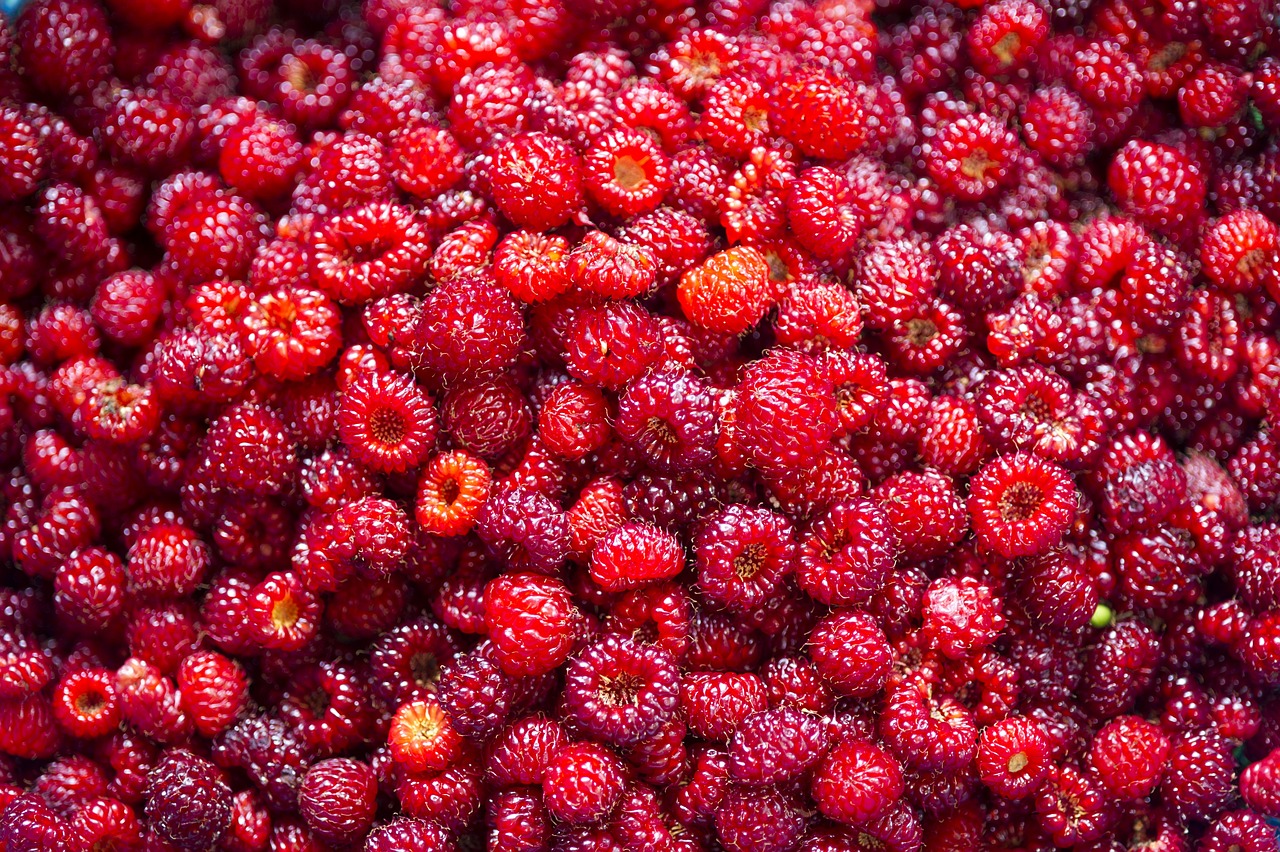
Identifying Common Pests
When it comes to growing strawberries, one of the most critical steps is being able to recognize the common pests that can threaten your precious crops. These little nuisances can wreak havoc on your plants if not addressed promptly. For instance, aphids are tiny, soft-bodied insects that often cluster on the undersides of leaves, sucking out the vital juices of your strawberry plants. Their presence can lead to stunted growth and a decline in fruit quality. Similarly, slugs are notorious for their slimy trails and voracious appetites, often munching on the leaves and even the fruit itself, leaving behind unsightly holes and a mess.
Another pest to watch out for is the strawberry weevil, which can cause significant damage to the flowers and developing fruit. These pests are often hard to spot, as they blend in with the plant, but their impact is unmistakable. If you notice that your strawberries are not producing as expected or see signs of damage, it’s time to take action.
To help you better understand these threats, here’s a quick overview of some common strawberry pests:
| Pest | Signs of Infestation | Control Methods |
|---|---|---|
| Aphids | Curled leaves, sticky residue (honeydew) | Insecticidal soap, neem oil |
| Slugs | Irregular holes in leaves, slime trails | Handpicking, traps, diatomaceous earth |
| Strawberry Weevil | Damaged flowers, misshapen fruit | Crop rotation, insecticides |
Early detection is key. Regularly inspect your plants, especially the undersides of leaves and around the base of the plants. If you notice any signs of pests, take immediate action to mitigate the damage. You can use organic pest control methods, such as introducing beneficial insects like ladybugs, which naturally prey on aphids. Keeping your garden clean and free of debris can also help reduce pest populations.
By staying vigilant and informed about common pests, you can protect your strawberry plants and ensure a bountiful harvest. Remember, the sooner you identify and address these issues, the better your chances of enjoying juicy, delicious strawberries!
- What are the most common pests that affect strawberries? The most common pests include aphids, slugs, and strawberry weevils.
- How can I naturally control pests in my strawberry garden? You can introduce beneficial insects, use insecticidal soap, and maintain a clean garden environment.
- What signs should I look for to detect pest infestations? Look for curled leaves, holes in the foliage, and damaged fruit as indicators of pest problems.
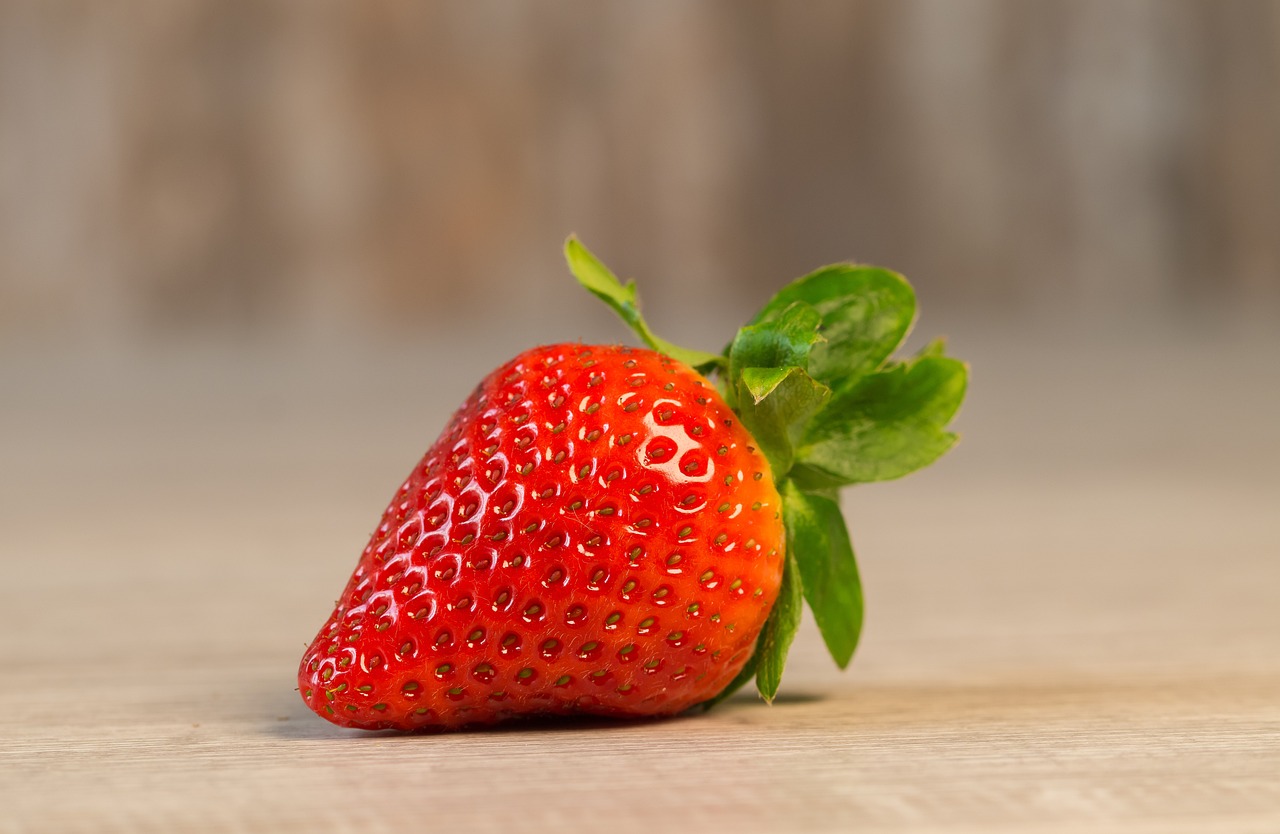
Preventing Fungal Diseases
Fungal diseases can pose a significant threat to your strawberry plants, often leading to devastating losses if not managed properly. To keep your strawberry patch thriving, it's essential to implement effective prevention strategies. One of the most important steps is to ensure proper air circulation around your plants. This can be achieved by spacing your plants adequately, allowing for airflow that reduces humidity levels around the foliage. Without adequate airflow, moisture can linger, creating a perfect environment for fungi to flourish.
Another critical aspect of prevention is practicing crop rotation. By changing the location of your strawberry plants each season, you can disrupt the life cycles of fungal pathogens that may linger in the soil. This method not only helps to minimize disease incidence but also promotes healthier soil and better overall plant growth.
Additionally, maintaining a clean growing environment is key. Regularly removing debris and dead plant material from your garden can significantly reduce the chances of fungal spores finding a host. Consider using mulch to cover the soil around your plants. This not only helps in moisture retention but also acts as a barrier against soil-borne pathogens.
In your quest to prevent fungal diseases, be vigilant about watering practices. Overhead watering can create a moist environment conducive to fungal growth. Instead, opt for drip irrigation or watering at the base of the plants to keep the foliage dry. If you notice any signs of fungal infection, such as discolored or wilting leaves, act swiftly to remove affected plants and apply appropriate fungicides as a preventive measure.
To summarize, here are some effective strategies for preventing fungal diseases in your strawberry garden:
- Ensure proper air circulation by spacing plants adequately.
- Practice crop rotation to disrupt fungal life cycles.
- Maintain a clean environment by removing debris and dead material.
- Use mulch to protect against soil-borne pathogens.
- Implement proper watering techniques to keep foliage dry.
By following these guidelines, you can significantly reduce the risk of fungal diseases in your strawberry plants, allowing them to flourish and produce the sweet, juicy fruits you desire.
- What are the common fungal diseases that affect strawberries?
Common fungal diseases include powdery mildew, gray mold, and anthracnose. Each of these can cause severe damage if not addressed promptly. - How can I tell if my strawberries are affected by a fungal disease?
Look for signs such as wilting leaves, discoloration, or a fuzzy mold growth on the fruit. Early detection is key to effective management. - Are there organic methods to prevent fungal diseases?
Yes! Practices such as crop rotation, maintaining cleanliness, and using organic fungicides can be effective in managing fungal threats. - How often should I check my strawberry plants for fungal diseases?
Regular inspections, at least once a week, can help you catch any issues early and take action before they escalate.
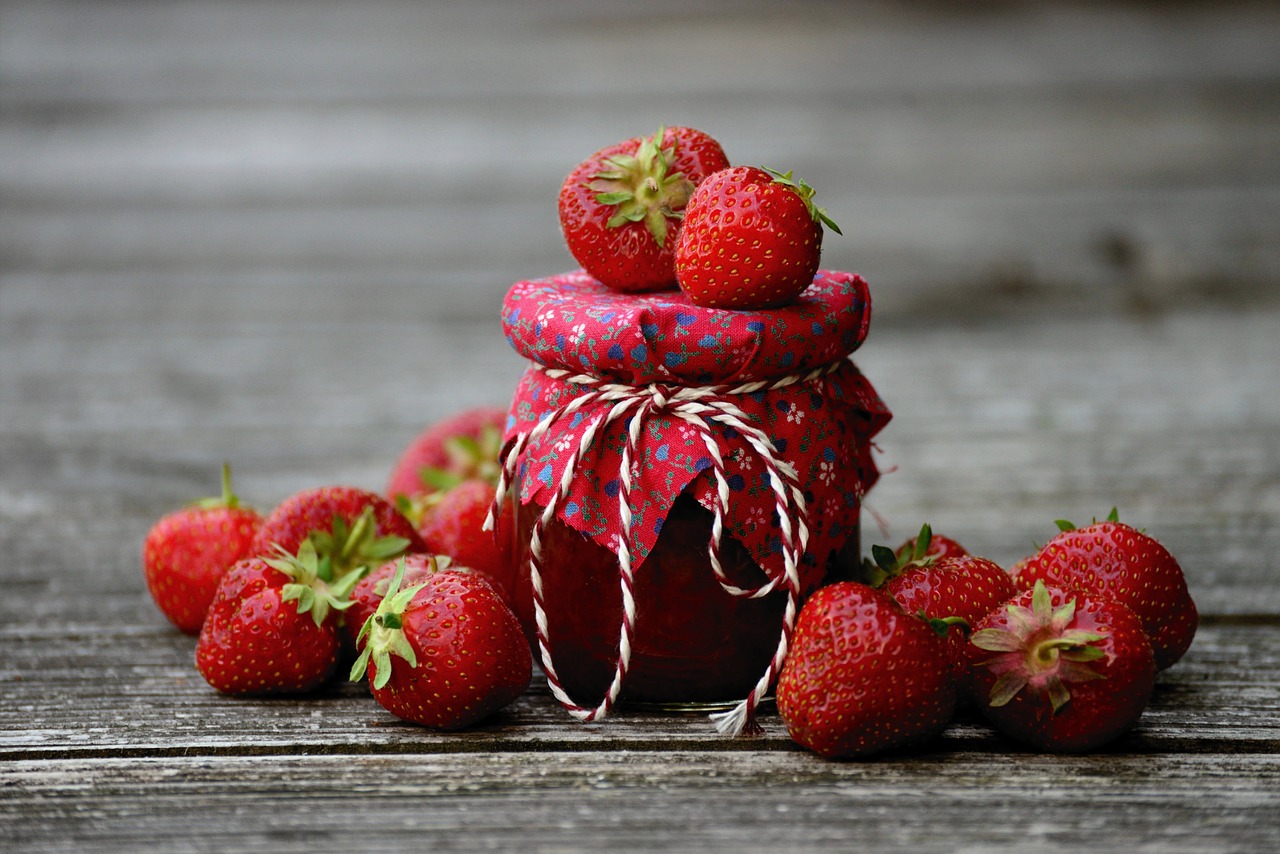
Harvesting Strawberries
Knowing when and how to harvest strawberries is essential for enjoying their peak flavor. Imagine biting into a perfectly ripe strawberry, bursting with sweetness and juiciness—that's the reward for all your hard work in the garden! But how do you ensure that you’re picking them at just the right moment? It’s all about understanding the signs of ripeness and employing the right harvesting techniques.
First things first, let's talk about recognizing ripeness. Strawberries are a bit like a fine wine; they need the right conditions to develop their full flavor. You’ll want to look for a few key indicators: the color should be a vibrant red, with no green or white patches remaining. The fruit should feel firm yet slightly soft to the touch, indicating that it’s juicy and ready to eat. If you’re unsure, remember this: ripe strawberries will often have a sweet aroma that’s hard to resist!
Once you’ve identified those luscious berries, it’s time to focus on harvesting techniques. The goal here is to minimize damage to both the fruit and the plant. Instead of just yanking them off the stem, gently twist or cut the stem about an inch above the berry. This method not only keeps the fruit intact but also prevents damage to the plant, allowing it to continue producing. It’s like giving your plants a little hug instead of a rough shake!
After harvesting, you might wonder how to store these beauties to keep them fresh. Strawberries are delicate and can spoil quickly, so it’s important to handle them with care. Place them in a breathable container, like a basket or a cardboard box, and avoid washing them until you’re ready to eat. Refrigeration can help prolong their shelf life, but be sure not to crowd them, as this can lead to bruising.
In addition to enjoying them fresh, there are countless ways to use your strawberries in the kitchen. Whether you’re making a delicious smoothie, a refreshing salad, or even a decadent dessert, strawberries add a burst of flavor that’s hard to beat. So, don’t just stop at harvesting; get creative and explore the culinary possibilities!
- When is the best time to harvest strawberries? The best time to harvest strawberries is in the morning when the temperatures are cooler, and the fruit is firm and cool to the touch.
- How can I tell if my strawberries are ripe? Ripe strawberries should be a deep red color, firm yet slightly soft, and have a sweet fragrance.
- What’s the best way to store harvested strawberries? Store strawberries in a breathable container in the refrigerator. Avoid washing them until you’re ready to eat to prevent spoilage.
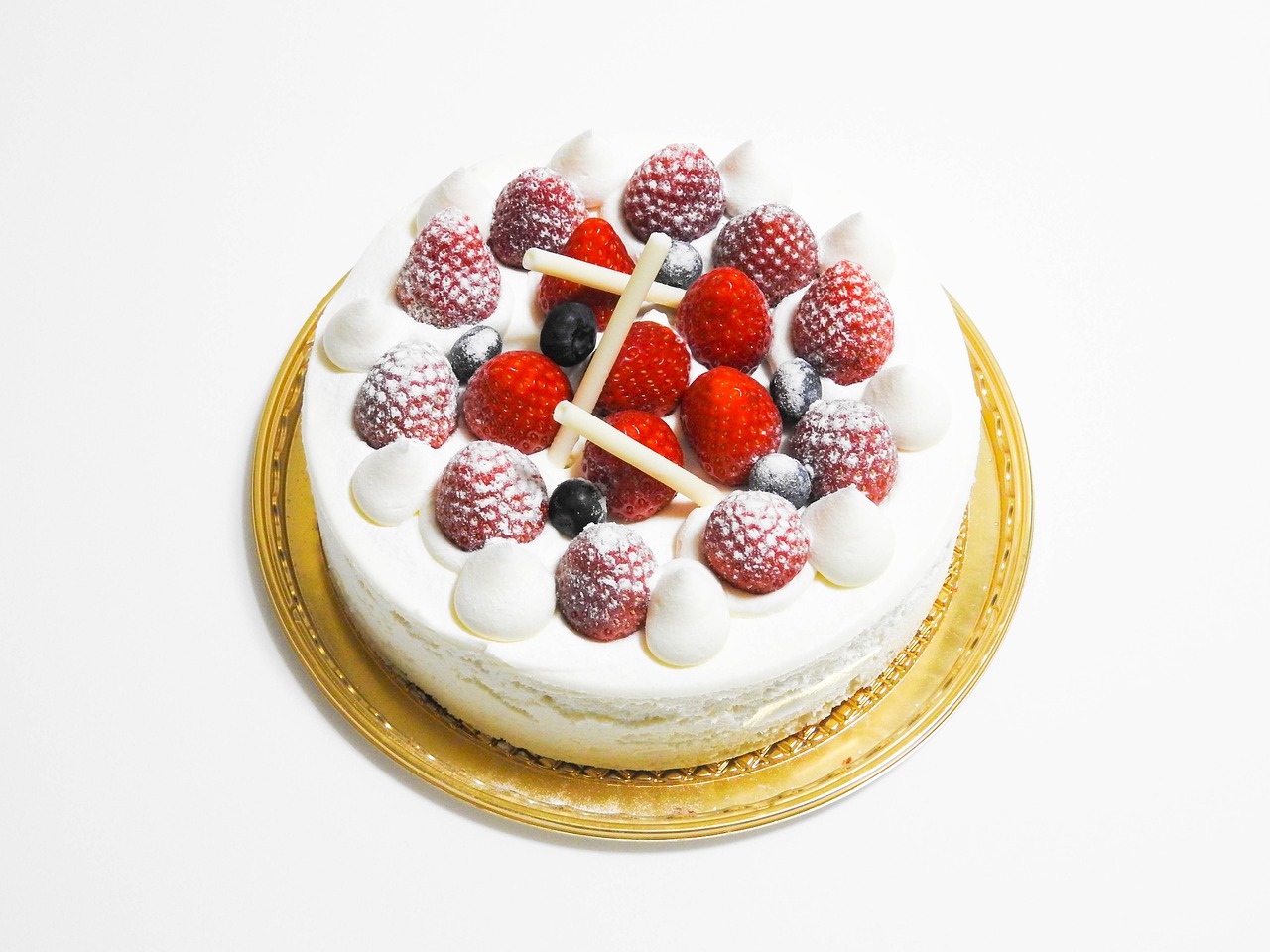
Recognizing Ripeness
When it comes to harvesting strawberries, recognizing ripeness is an art in itself. You don’t want to pick them too early, as they’ll be tart and less flavorful, nor do you want to wait too long, risking overripeness and spoilage. So, how do you know when your strawberries are at their prime? Here are a few key indicators to help you determine the perfect moment:
- Color: Look for a vibrant red hue. The deeper the color, the sweeter the fruit. Strawberries should have a uniform color without any green or white patches.
- Firmness: Gently squeeze the berry; it should feel firm but slightly soft to the touch. If it feels mushy, it may be overripened.
- Aroma: Ripe strawberries emit a sweet, fragrant aroma. If you can smell their sweetness, it’s a good sign they’re ready to be picked.
- Size: While size can vary by variety, generally, larger strawberries tend to be riper. However, don’t solely rely on size; always consider the other indicators.
Once you’ve assessed these factors, it’s time to harvest! Picking strawberries at the right moment not only enhances their flavor but also increases their shelf life. Remember, strawberries don’t continue to ripen significantly after being picked, so getting them at peak ripeness is crucial.
In addition to these signs, consider the weather and growing conditions. If you've had a warm spell, strawberries may ripen faster than usual. Conversely, cooler weather can slow down the ripening process. Always keep an eye on your plants and be ready to harvest when the time is right!
Q: How can I tell if my strawberries are overripe?
A: Overripe strawberries will often look dull in color, may have dark spots, and feel mushy to the touch. If they have started to leak juice, it’s definitely time to use them quickly!
Q: Can I pick strawberries that are still a little green?
A: It’s best to wait until strawberries are fully red. Picking them when they are still green can result in a sour taste, as they will not ripen significantly after being picked.
Q: Should I wash strawberries before storing them?
A: It’s advisable to wash strawberries just before you eat them. Washing them too early can lead to increased spoilage due to moisture. Store them in a breathable container and keep them dry until you’re ready to enjoy!
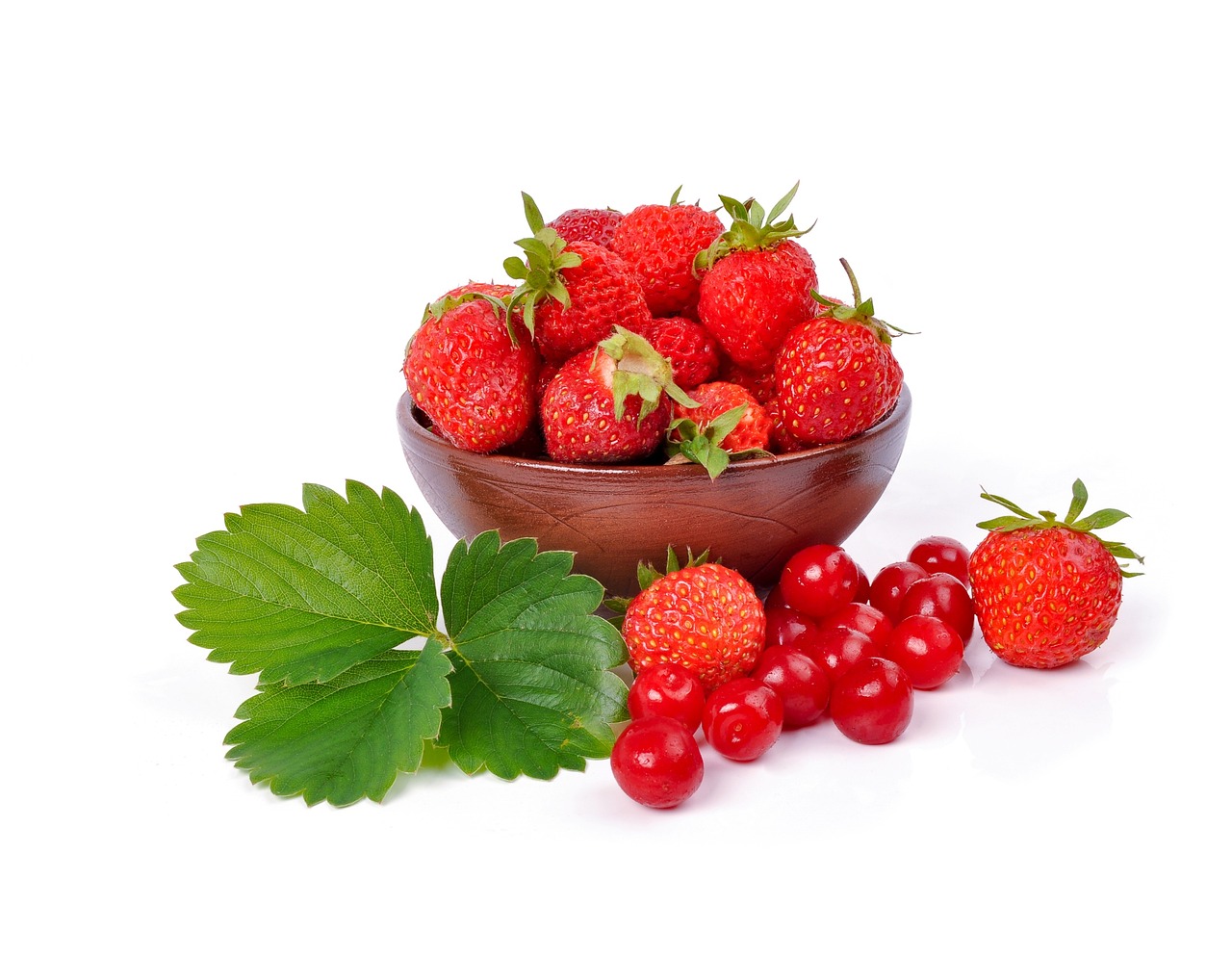
Harvesting Techniques
When it comes to harvesting strawberries, the right techniques can make all the difference between a delicious treat and a disappointing experience. Imagine biting into a strawberry that’s bursting with flavor versus one that’s mushy and bland—it's all about how you pick them! First and foremost, ensure you have the right tools at your disposal. A pair of garden scissors or shears can be incredibly helpful. They allow you to cut the stem cleanly without damaging the fruit or the plant itself.
Timing is everything when it comes to harvesting strawberries. The best time to pick them is early in the morning after the dew has dried but before the sun has fully risen. This not only helps preserve their freshness but also ensures that the berries are firm and less prone to bruising. Look for strawberries that are fully colored—typically a vibrant red—indicating they are ripe and ready to be enjoyed. A good rule of thumb is to gently squeeze the berry; it should be firm but not hard, indicating it's at its peak.
To harvest, gently grasp the berry and twist it slightly while pulling it away from the plant. This technique minimizes damage to the fruit. If you notice any green or white areas on the strawberry, it's best to leave it on the plant for a few more days. Picking strawberries too early can lead to a less than satisfactory flavor experience. Remember, strawberries do not continue to ripen significantly after being picked, so it’s crucial to wait until they are fully ripe.
After harvesting, place the strawberries in a shallow container to avoid crushing them. Stacking them too high can lead to bruising, which diminishes their quality. If you’re lucky enough to have a large harvest, consider using a single-layer method for storage. This means placing them in a single layer rather than piling them up. It’s a small but effective trick to keep them looking and tasting fresh.
Once you've gathered your strawberries, it’s essential to handle them with care. Avoid washing them until you're ready to eat or use them in a recipe, as moisture can promote mold growth. If you’re planning to store them, keep them in the refrigerator in a breathable container, like a cardboard box or a container lined with paper towels. This helps maintain their freshness for longer.
In summary, successful strawberry harvesting involves timing, technique, and gentle handling. By following these tips, you can enjoy a bountiful harvest that not only looks great but also tantalizes your taste buds. Now, let’s move on to some common questions about strawberry harvesting!
- When is the best time to harvest strawberries? The best time is early in the morning when the dew has dried, ensuring the berries are firm and fresh.
- How can I tell if a strawberry is ripe? Look for a vibrant red color and a firm texture. If there are still green or white areas, it’s best to wait a bit longer.
- What tools do I need for harvesting strawberries? A pair of garden scissors or shears is recommended for clean cuts, minimizing damage to the fruit.
- Should I wash strawberries before storing them? No, it’s best to wash them only when you’re ready to eat or use them to prevent mold growth.
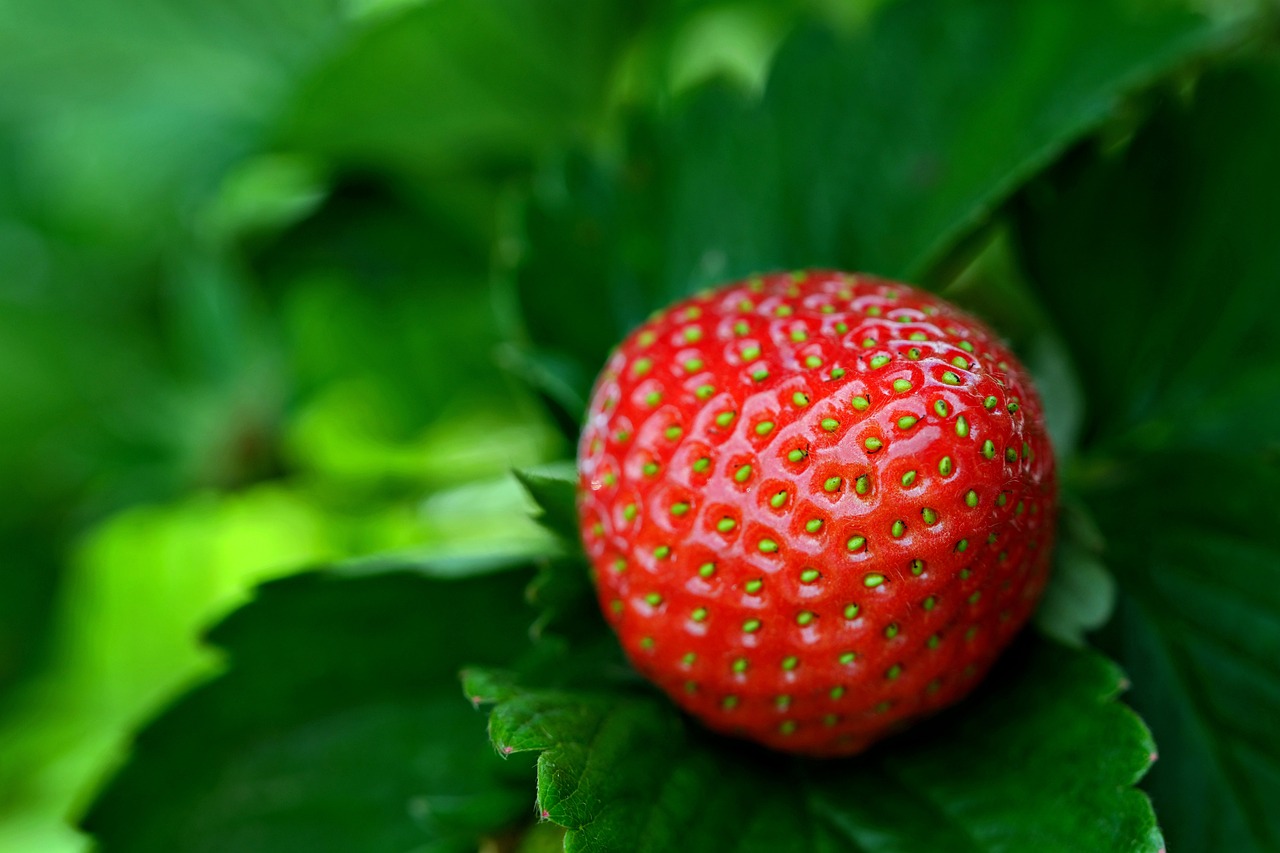
Storing and Enjoying Strawberries
When it comes to strawberries, the joy doesn't end with harvesting; in fact, that's just the beginning! Proper storage techniques are essential to maintain their delightful flavor and juicy texture. After all, who wants to bite into a mushy strawberry that has lost its charm? To keep your strawberries fresh, consider the following tips:
First, always store your strawberries in a breathable container. This means avoiding airtight plastic bags that can trap moisture and lead to spoilage. Instead, opt for containers lined with paper towels to absorb excess moisture, which keeps the berries dry and fresh. Additionally, refrigeration is your best friend when it comes to extending the shelf life of strawberries. Ideally, place them in the refrigerator's crisper drawer, where the temperature is slightly higher than the rest of the fridge, allowing them to breathe while staying cool.
Now, let's talk about the fun part—enjoying those luscious strawberries! These vibrant berries are incredibly versatile and can be used in countless ways. From desserts to salads, strawberries add a burst of flavor and color to any dish. Here are some creative ways to incorporate strawberries into your meals:
- Fresh Salads: Toss sliced strawberries into your favorite green salad for a refreshing twist. They pair beautifully with spinach, goat cheese, and a light vinaigrette.
- Delicious Desserts: Use strawberries in desserts like strawberry shortcake, tarts, or simply dipped in chocolate for a delightful treat.
- Smoothies: Blend strawberries with yogurt and a banana for a quick and healthy breakfast or snack.
- Homemade Jams: Preserve the taste of summer by making your own strawberry jam. It’s a fantastic way to enjoy strawberries long after the season ends!
By exploring these creative recipes, you can showcase the versatility of strawberries and elevate your culinary creations. Whether you’re indulging in a sweet treat or adding a pop of color to a savory dish, strawberries are sure to impress.
Q1: How long can I store fresh strawberries in the refrigerator?
A1: Fresh strawberries can last about 3 to 7 days in the refrigerator if stored properly. Make sure to check them regularly for any signs of spoilage.
Q2: Can I freeze strawberries for later use?
A2: Absolutely! Freezing strawberries is a great way to enjoy them later. Just wash, hull, and slice them before placing them in a single layer on a baking sheet. Once frozen, transfer them to an airtight container or freezer bag.
Q3: What’s the best way to wash strawberries before eating?
A3: Gently rinse strawberries under cold water just before eating. Avoid washing them too early, as excess moisture can lead to spoilage.
Q4: Are there any health benefits to eating strawberries?
A4: Yes! Strawberries are packed with vitamins, antioxidants, and fiber, making them a healthy addition to your diet. They can help boost your immune system and promote heart health.
So, whether you're savoring them fresh, whipping up a delightful dessert, or preserving them for later, strawberries are a delicious and nutritious fruit that deserves a spot in your kitchen!

Storing Fresh Strawberries
When it comes to enjoying the delightful taste of freshly harvested strawberries, proper storage is key to maintaining their freshness and flavor. After all, no one wants to bite into a mushy, spoiled strawberry! The first step in preserving your juicy treasures is to ensure they are clean. Gently rinse them under cool water, but avoid soaking them, as excess moisture can lead to mold and spoilage.
Once they are clean, it’s essential to dry the strawberries thoroughly. You can use a soft cloth or paper towel to pat them dry gently. This simple step helps remove any moisture that could cause decay. Next, consider using a breathable container for storage. A ventilated plastic container or a basket lined with a paper towel works wonders. This allows air circulation, which is crucial for keeping your strawberries fresh.
Refrigeration is your best friend when it comes to prolonging the life of fresh strawberries. Place the container in the refrigerator, ideally in the crisper drawer, which is designed to maintain optimal humidity levels. Remember, strawberries are sensitive to temperature; keeping them too cold or too warm can affect their quality. Try to consume them within a week for the best flavor, but if you notice any signs of spoilage, such as soft spots or mold, it’s wise to remove those berries immediately to prevent them from affecting the others.
For those looking to store strawberries for a longer period, freezing is an excellent option. To freeze strawberries, first, wash and dry them as mentioned earlier. Then, hull the strawberries by removing the green tops and any blemishes. Lay them out on a baking sheet in a single layer and freeze them until solid. Once frozen, transfer them to a freezer-safe bag or container. This method locks in their freshness and flavor, allowing you to enjoy your strawberries long after the growing season has ended.
In summary, proper storage techniques are essential for enjoying the full flavor of your strawberries. Whether you’re keeping them in the fridge or freezing them for later use, following these steps will ensure that you savor every juicy bite for days to come. So, go ahead, indulge in the sweetness of your homegrown strawberries!
- How long can I store fresh strawberries in the refrigerator?
Typically, fresh strawberries can last up to one week in the refrigerator if stored properly. - Can I wash strawberries before storing them?
Yes, but make sure to dry them thoroughly to prevent mold growth. - What is the best way to freeze strawberries?
Wash, hull, and freeze them in a single layer on a baking sheet before transferring them to a freezer-safe container. - Should I remove the green tops before storing?
It’s best to leave the green tops on until you are ready to eat or use the strawberries.
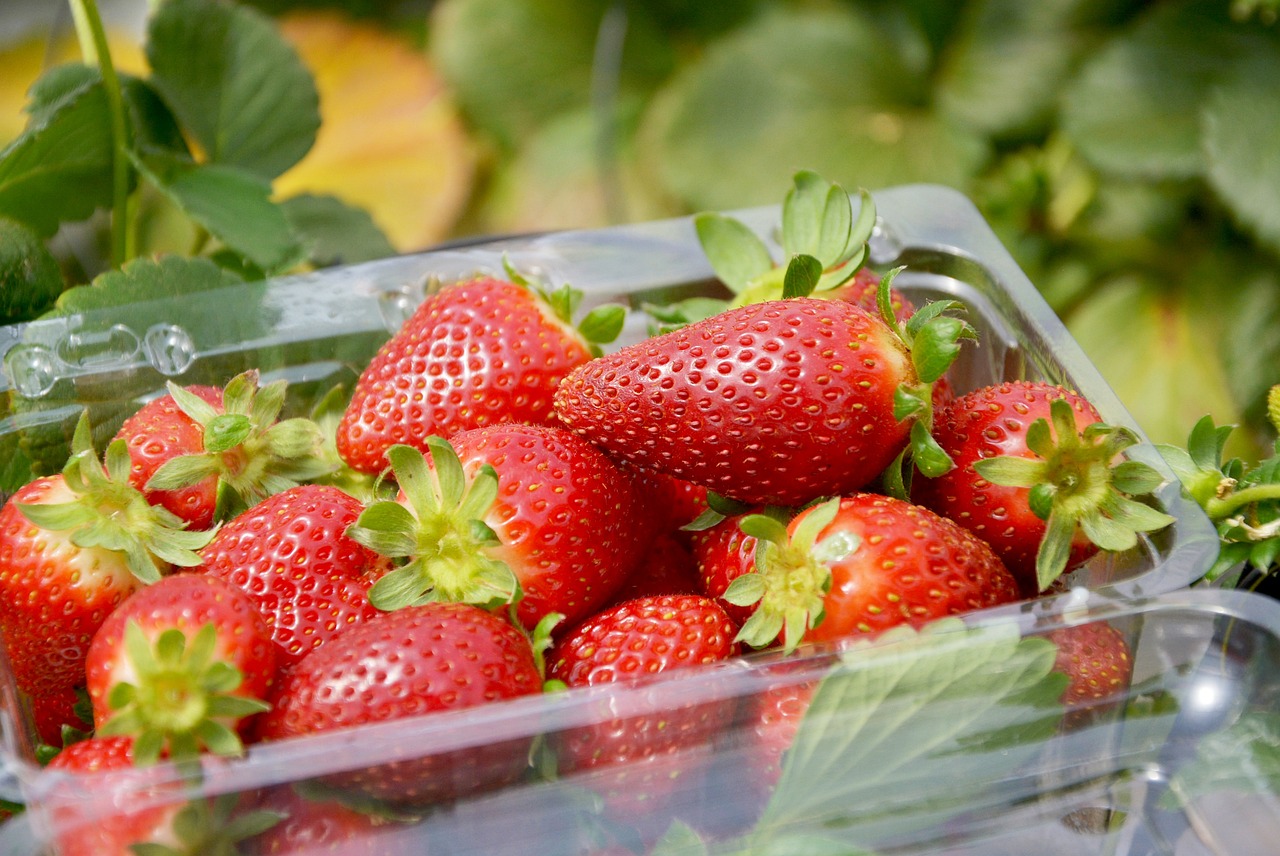
Creative Ways to Use Strawberries
Strawberries are not just a delightful snack; they are a versatile ingredient that can elevate a wide range of dishes! Imagine biting into a fresh, juicy strawberry, its sweetness bursting in your mouth. Now, think about how that flavor can add a new dimension to your meals. Whether you're looking to indulge your sweet tooth or add a splash of color and taste to your salads, strawberries can do it all. Here are some creative ways to incorporate these delicious berries into your culinary repertoire:
First up, let's talk about desserts. Strawberries are a classic choice for desserts, and for good reason! You can blend them into a smooth, creamy strawberry cheesecake or layer them in a trifle with whipped cream and sponge cake. For a quick treat, try dipping them in melted chocolate. The combination of sweet strawberries and rich chocolate is simply irresistible. And don’t forget about strawberry shortcake; the light, fluffy biscuits paired with strawberries and whipped cream create a dessert that feels like a warm hug!
If you’re aiming for something a bit healthier, strawberries shine in salads. Their sweet flavor pairs wonderfully with leafy greens, nuts, and a tangy vinaigrette. You could toss together a refreshing spinach salad with sliced strawberries, goat cheese, and walnuts for a perfect balance of flavors. Or, consider a strawberry and avocado salad that combines creamy avocado with the sweet tartness of strawberries, drizzled with a light lime dressing. It’s a dish that not only looks stunning but is also packed with nutrients!
Another exciting way to enjoy strawberries is by incorporating them into beverages. They can transform a simple glass of water into a refreshing fruit-infused drink. Just slice some strawberries and add them to your water pitcher for a hint of sweetness. For a more indulgent option, blend strawberries into a smoothie with yogurt and your choice of milk for a creamy, delicious breakfast. And let’s not forget about cocktails! A strawberry mojito or a strawberry daiquiri can turn any gathering into a festive occasion.
Finally, don't overlook the potential of strawberries in savory dishes. Yes, you heard that right! Strawberries can add a surprising twist to your meals. Try using them in a salsa to top grilled chicken or fish. The sweetness of the strawberries combined with jalapeños, cilantro, and lime juice creates a vibrant and exciting flavor profile. You can also blend strawberries into a BBQ sauce for a unique glaze that will impress your guests at your next cookout.
In summary, strawberries are a fantastic ingredient that can be used in countless ways. From sweet desserts to savory dishes, their versatility knows no bounds. So, the next time you find yourself with a basket of fresh strawberries, don’t just think about snacking. Get creative and explore the myriad of delicious possibilities!
Q: Can I freeze strawberries for later use?
A: Absolutely! Freezing strawberries is a great way to preserve their flavor. Just wash, hull, and slice them, then spread them out on a baking sheet to freeze before transferring them to a freezer bag.
Q: How do I know when strawberries are ripe?
A: Ripe strawberries are bright red, firm, and fragrant. They should come off the plant easily when gently pulled. Avoid berries that are green or overly soft.
Q: What are some health benefits of strawberries?
A: Strawberries are rich in vitamins, especially vitamin C, and are a great source of antioxidants. They can help improve heart health and support your immune system.
Frequently Asked Questions
- What is the best strawberry variety to grow?
Choosing the right strawberry variety depends on your climate and personal taste preferences. Some popular varieties include June-bearing, everbearing, and day-neutral strawberries. June-bearing types produce a large crop in late spring, while everbearing and day-neutral varieties yield fruit throughout the growing season.
- How do I prepare the soil for planting strawberries?
Preparing the soil involves testing the pH to ensure it's slightly acidic (around 6.0 to 6.8). You can improve soil quality by adding organic matter like compost or well-rotted manure, which enhances fertility and moisture retention, crucial for healthy strawberry plants.
- What is the ideal location for growing strawberries?
Strawberries thrive in sunny spots that receive at least six hours of sunlight daily. A well-drained location is essential to prevent root rot and other moisture-related issues. Choose a spot with good air circulation to reduce the risk of fungal diseases.
- How often should I water my strawberry plants?
Strawberries need consistent moisture, especially during fruit development. Water them deeply about once a week, ensuring the soil stays moist but not soggy. During dry spells, you may need to water more frequently to keep the plants healthy.
- What pests should I watch out for when growing strawberries?
Common pests include aphids, slugs, and spider mites. Regularly inspect your plants for signs of damage or infestation. Early detection is key; using organic pesticides or natural predators can help control these pests effectively.
- How can I prevent fungal diseases in my strawberry plants?
Preventing fungal diseases involves practicing good cultural habits, such as crop rotation, proper spacing between plants, and avoiding overhead watering. Ensuring good air circulation around your plants also helps minimize the risk of fungal infections.
- When is the best time to harvest strawberries?
The best time to harvest strawberries is when they are fully ripe, indicated by a bright red color and a slight softness to the touch. Picking them at the right time ensures maximum sweetness and flavor.
- What is the proper technique for harvesting strawberries?
To harvest strawberries, gently twist or cut the stem just above the berry. This method minimizes damage to both the fruit and the plant, allowing for better growth and future yields.
- How should I store fresh strawberries?
Store fresh strawberries in a breathable container in the refrigerator. Avoid washing them until you're ready to eat, as excess moisture can lead to spoilage. Keeping them dry helps maintain their freshness for a longer time.
- What are some creative ways to use strawberries?
Strawberries are incredibly versatile! You can enjoy them in desserts like cakes and pies, toss them in salads, blend them into smoothies, or even use them as a topping for yogurt. The possibilities are endless!



















